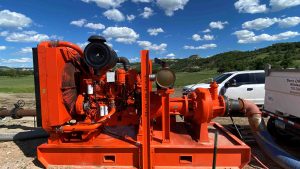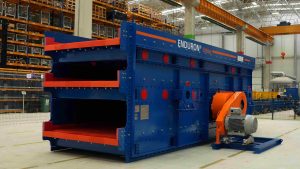With the increased adoption of digital technologies in the trucking industry, data management and strategy have become even more vital for success. Over the years, the developments in digitalisation and connectivity have created the perfect storm for big data in trucking. One area where fleet owners have seen the benefits of applying data and analytics is maintenance, with predictive and prescriptive asset-management strategies becoming prevalent.
While predictive maintenance has been around for quite a while and has consistently gained significant traction, Pinard says Scania continually strives to perfect its market-leading technology to become more dynamic and to drive better insights from the data. The next step in prescriptive asset management, explains Pinard, consists of industry-specific, usage-based maintenance and component replacements.
“Our customers are becoming increasingly aware of the role that connected vehicles play in determining when maintenance should occur, at exactly the right point, to maintain the balance between cost-effectiveness and vehicle downtime,” says Pinard.
This trend is changing operations dramatically, and construction, quarrying and mining are no exception. “In the construction and mining industries, customers are becoming more attuned to technology, especially the use of vehicle data to streamline processes and increase profitability,” says Pinard.
To enable this data-driven service revolution, Scania has over 500 000 connected vehicles globally, stretching across multiple countries and industries. In southern Africa, the company has just over 16 000 connected vehicles, of which 4-5% are in the heavy construction and quarrying/mining applications. This number, reiterates Pinard, excludes short to medium haul side tippers, which some may consider to be part of this vehicle group.

Unpacking Scania’s data-driven solutions
From optimal maintenance, Scania is using data to capture operating details which indicate areas where cost-efficiencies can be leveraged. “You don’t know what you don’t know without data,” says Pinard.
Every truck is used and driven differently, he says, and a one-size-fits-all service solution is therefore out of the question. Traditionally, fleet operators have always relied on service intervals based on set kilometres or the number of operating hours. This approach has in most instances proved to be flawed, with a vehicle being serviced too often, or not enough. With Scania’s new Flexible Maintenance Plan, which allows for constant monitoring of individual truck data, fleet operators now have access to personalised cost-saving opportunities.
“Scania is utilising advanced data-driven services in various areas to improve customer service and profitability at large. With our Flexible Maintenance Plan, each vehicle has a tailor-made maintenance routine based on each customer’s unique operation in order to ensure the right maintenance at the right time,” says Pinard.
Real-time operational data and advanced algorithms identify with a great deal of precision the right service occasion for each individual component. When several factors occur, a maintenance event is triggered. Individual vehicle data will determine if this service needs to be carried out or if it can be postponed to when a new event is triggered.
Using a modular concept, maintenance for each component group can be extended to maximise utilisation and keep costs to a minimum. The maintenance plans are also updated weekly to ensure that any changes in operation are considered.
“We have also linked vehicle maintenance to fuel consumption, which is a direct measurement of how hard a vehicle is working. Customers who manage to improve their fuel consumption automatically have their maintenance intervals extended, thus reducing their operating costs even further,” says Pinard.
In terms of customer service, Scania proactively contacts customers to book maintenance events using live data and alerts which has the effect of reducing unnecessary administration and resource time from a customer’s perspective, as well as allowing them to focus on their core business, with peace of mind that their vehicle is always in peak condition.

Benefits abound
In addition, Scania offers various Fleet Management Solutions which analyse vehicle data and convert this into important business intelligence for fleet operators, allowing them to make quick decisions. According to Pinard, reduced time spent analysing vehicle and trip data can be allocated to making important business decisions.
“By turning data insights into long-term sustainable cost savings, flexible service intervals and improved fuel efficiencies, Scania customers are able to operate at peak performance. The result is enhanced profitability. In today’s competitive and fast-changing transport industry, this is critical for success,” says Pinard.

Looking ahead, Pinard says applying data and analytics to maintenance is the way forward and the sooner fleet owners start taking advantage of this readily available information to help drive their business, the better.
“We are in the ever-expanding fourth industrial revolution – using big data to maximise efficiencies and ultimately profits. Very soon we will also see a lot more solutions being offered on a customer specific level, where each product and asset management solution is tailor-made down to the finest detail. In the end, generic one-size-fits-all services will eventually become obsolete,” concludes Pinard.






